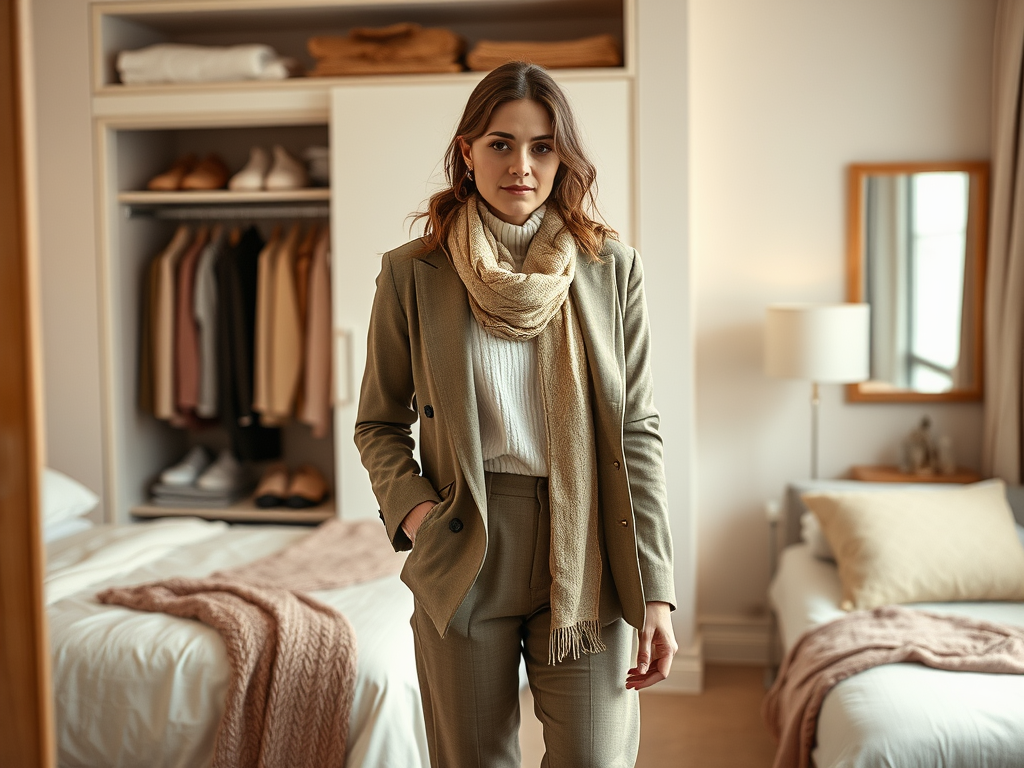In the modern workplace, defining what to wear can be a fine balancing act, particularly for women navigating the waters of business casual attire. This elusive dress code often leaves many questioning just how far they can stretch the boundaries of personal style while still adhering to professional norms. Whether you’re gearing up for a day in the office, a client meeting, or a casual Friday, understanding the nuances of business casual is crucial. Making informed choices about your wardrobe can not only enhance your professional appearance but also boost your confidence. By embracing the right elements and treading carefully around common pitfalls, you can strike the perfect balance between chic and corporate.
As we delve into the essential dos and don’ts of business casual dressing, it’s important to note that style is subjective, and various workplaces may have different interpretations of business casual. With that in mind, some tips may resonate more than others depending on your personal style and work environment. The following sections outline vital recommendations that will help you navigate the complexities of business casual attire effectively, ensuring you’re never out of place in the office. Let’s embrace this fashionable yet professional journey together!
Understanding Business Casual Attire

Defining what constitutes business casual can be challenging, as it varies from one company to another. At its core, business casual strikes a balance between professional and relaxed styles. It’s typically less formal than traditional business attire, which often calls for tailored suits and structured dresses. Instead, business casual allows for versatile options that still maintain a polished image. Understanding the key components of business casual attire can empower you to make better wardrobe choices that reflect your individuality without compromising professionalism.
- Business casual attire often includes tailored blouses, slacks, and skirts, whereas formal business attire may involve suits.
- Dress codes can differ significantly by industry and company culture, so always consider your workplace’s policy.
- Business casual is not synonymous with casual wear; think polished yet comfortable styles.
The Dos of Business Casual Dressing

Now that we’ve established what business casual encompasses, let’s explore the key dos that will elevate your style while maintaining professionalism. Wearing well-fitted and suitable pieces can enhance not only your appearance but your workplace interactions as well. Comfort and confidence often go hand in hand, and making informed choices can also ensure that you’re even better prepared to tackle your workday. Below, we’ll highlight essential tips and recommendations to incorporate into your business casual wardrobe.
Choose the Right Fit
The fit of your clothing can drastically impact your overall appearance and comfort level. Clothes that fit well project confidence and authority while also being comfortable enough to let you focus on your tasks. Overly tight or baggy clothing, on the other hand, can lead to distractions or create an impression of unprofessionalism. To ensure you’re always polished, consider visiting a tailor for pieces that need adjustments. A well-fitted blazer, for instance, can transform a simple outfit into something special.
Embrace Layering
Layering is an invaluable tactic for business casual dressing, allowing you to adapt to varying office temperatures while also adding depth to your look. A classic blazer over a blouse can provide structure, while a lightweight cardigan can bring a soft touch to an outfit. Aim for combinations that look cohesive yet interesting. Not all layers need to match perfectly—mixing textures and colors can create an engaging visual without sacrificing professionalism.
| Layering Piece | Styling Tips |
|---|---|
| Blazer | Pair with fitted slacks or a pencil skirt for a sharp look. |
| Cardigan | Opt for light colors over darker blouses for contrast. |
| Scarf | Add color or pattern without overwhelming your outfit. |
Opt for Comfortable Footwear
Footwear is a crucial element of business casual attire, as the right pair can enhance both comfort and professionalism. Choose styles that provide support without skimping on style; think polished loafers and low-heeled shoes instead of sneakers or flip-flops. You want shoes that look good but also allow for mobility throughout your busy day. Investing in quality footwear can give you the confidence to tackle any challenge that comes your way.
The Don’ts of Business Casual Dressing
While we discussed the elements to embrace in your business casual wardrobe, there are also several significant mistakes that should be avoided to ensure professionalism. From item choices to grooming details, here’s what to steer clear of when putting together your business casual looks. Awareness of these common pitfalls will help maintain a polished image at all times.
Skip Overly Casual Items
Certain items are generally deemed too informal for a business casual setting. Consider leaving at home your favorite graphic tees, shorts, and overly distressed denim, as they can dilute the professionalism of your look. Remember that while comfort is key, it should not come at the expense of your work persona. It’s better to err on the side of caution when unsure about a piece’s appropriateness.
Avoid Cluttered Patterns
While a touch of creativity can be valuable, busy patterns can often distract from your overall presence. Instead, opt for subtle prints or solid colors that project a more professional appearance. This choice will keep your attire clean and focused while allowing for accessories to express personality. When in doubt, always choose simplicity over complexity.
Don’t Neglect Grooming
Grooming should not be an afterthought in your business casual outfit planning. A polished appearance enhances the effectiveness of your attire and contributes to your overall professional image. Make sure your hair is neat and appropriate for the workplace, and avoid overpowering scents or excessive makeup. Investing time in grooming ensures you’re always ready to make a positive impression.
Conclusion
Embracing business casual attire as a woman in the workplace opens up a unique avenue for self-expression while remaining compliant with professional expectations. By keeping in mind the essential dos and don’ts outlined in this article, you can craft outfits that not only look great but also instill confidence and professionalism. Understanding what works and what doesn’t will help you create a wardrobe that thrives within your work context, making you feel empowered and stylish at work.
Frequently Asked Questions
- What is considered business casual attire for women? Business casual typically includes tailored blouses, slacks, skirts, and dresses that aren’t overly formal. Footwear should be professional but can include flats or low heels.
- Are jeans acceptable in business casual? Yes, jeans can be acceptable if they are dark-wash and free from tears or distressing. Pairing them with a blazer or polished top is advised.
- Can I wear leggings as business casual? Leggings may be worn if styled appropriately with a tunic or a longer top that covers the rear.
- What colors are appropriate for business casual? Neutral tones with the occasional pop of color are ideal. Classic colors like navy, black, gray, and soft pastels usually work well.
- Are flip-flops acceptable for business casual? No, flip-flops are generally considered too casual and should be avoided in a business setting. Opt for closed-toe shoes or stylish sandals instead.
